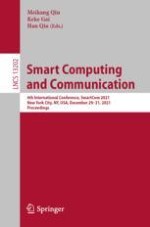This book constitutes the proceedings of the 6th International Conference on Smart Computing and Communication, SmartCom 2021, which took place in New York City, USA, during December 29–31, 2021.*
The 44 papers included in this book were carefully reviewed and selected from 165 submissions. The scope of SmartCom 2021 was broad, from smart data to smart communications, from smart cloud computing to smart security. The conference gathered all high-quality research/industrial papers related to smart computing and communications and aimed at proposing a reference guideline for further research.
* Conference was held online due to the COVID-19 pandemic.
